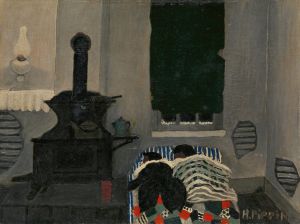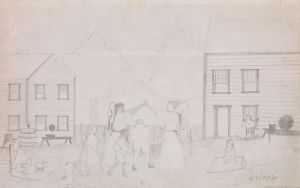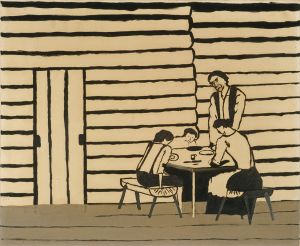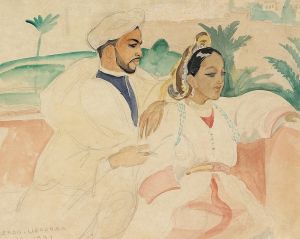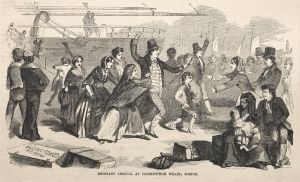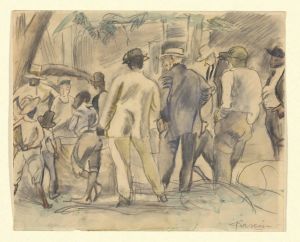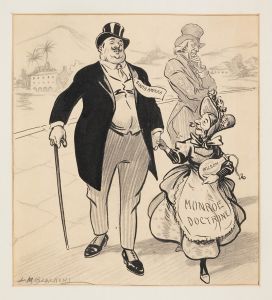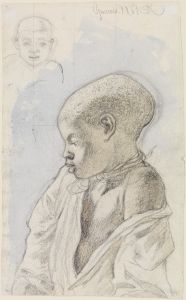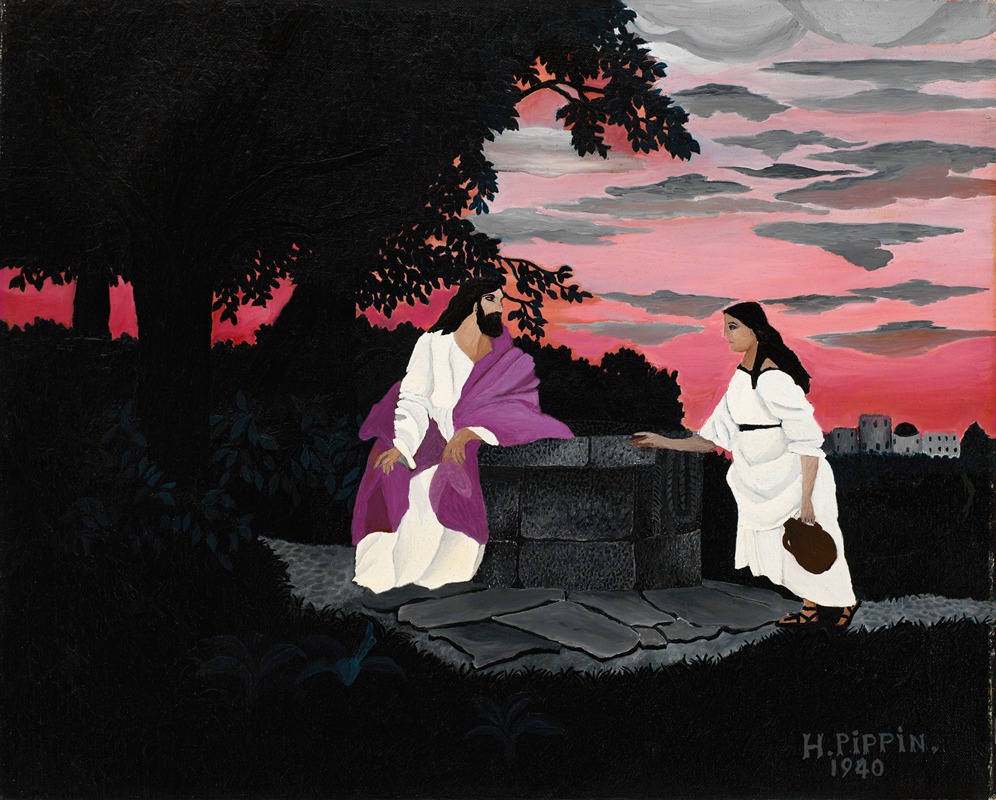
Christ and the Woman of Samaria
A hand-painted replica of Horace Pippin’s masterpiece Christ and the Woman of Samaria, meticulously crafted by professional artists to capture the true essence of the original. Each piece is created with museum-quality canvas and rare mineral pigments, carefully painted by experienced artists with delicate brushstrokes and rich, layered colors to perfectly recreate the texture of the original artwork. Unlike machine-printed reproductions, this hand-painted version brings the painting to life, infused with the artist’s emotions and skill in every stroke. Whether for personal collection or home decoration, it instantly elevates the artistic atmosphere of any space.
"Christ and the Woman of Samaria" is a painting by Horace Pippin, an African American artist known for his works that often reflect his personal experiences and the broader African American experience. Pippin was born on February 22, 1888, in West Chester, Pennsylvania, and he began painting later in life after serving in World War I, where he was injured. His work is characterized by its bold colors, strong compositions, and often, a narrative quality that reflects his deep interest in history and social issues.
The painting "Christ and the Woman of Samaria" depicts a scene from the New Testament, specifically from the Gospel of John, Chapter 4. In this biblical story, Jesus speaks with a Samaritan woman at Jacob's well, breaking several social norms of the time, including those related to gender and ethnicity. This encounter is significant as it highlights themes of acceptance, redemption, and the breaking down of societal barriers.
Pippin's interpretation of this scene is notable for its simplicity and emotional depth. He uses a straightforward, almost folk-art style that emphasizes the humanity and dignity of the figures. The composition typically features Jesus and the woman in a moment of conversation, with the well prominently placed between them. Pippin's use of color and form is deliberate, often employing a limited palette to focus attention on the interaction between the two figures.
Horace Pippin's work, including "Christ and the Woman of Samaria," is celebrated for its unique perspective and its ability to convey powerful messages through accessible imagery. His paintings often reflect his personal experiences and his observations of the world around him, making his work both deeply personal and universally resonant.
Pippin's contributions to American art have been recognized posthumously, and his works are held in several major museums, including the Metropolitan Museum of Art and the Philadelphia Museum of Art. His paintings continue to be studied and appreciated for their historical significance and their artistic merit.
"Christ and the Woman of Samaria" stands as a testament to Pippin's skill as a storyteller and his ability to infuse his work with profound meaning. Through this painting, Pippin not only illustrates a biblical narrative but also invites viewers to reflect on themes of compassion, understanding, and the breaking down of social barriers.






